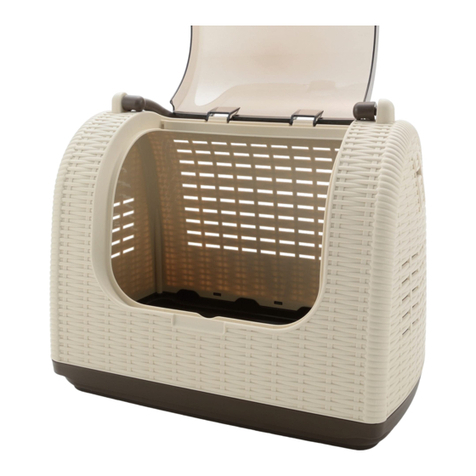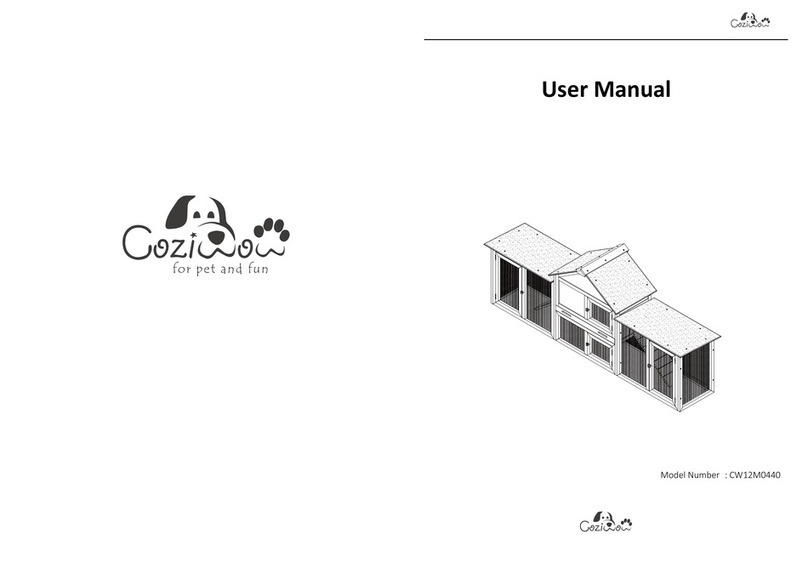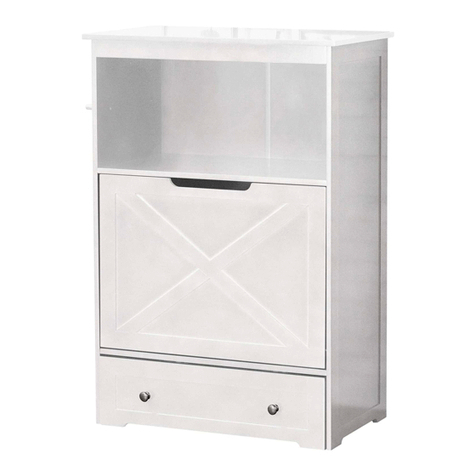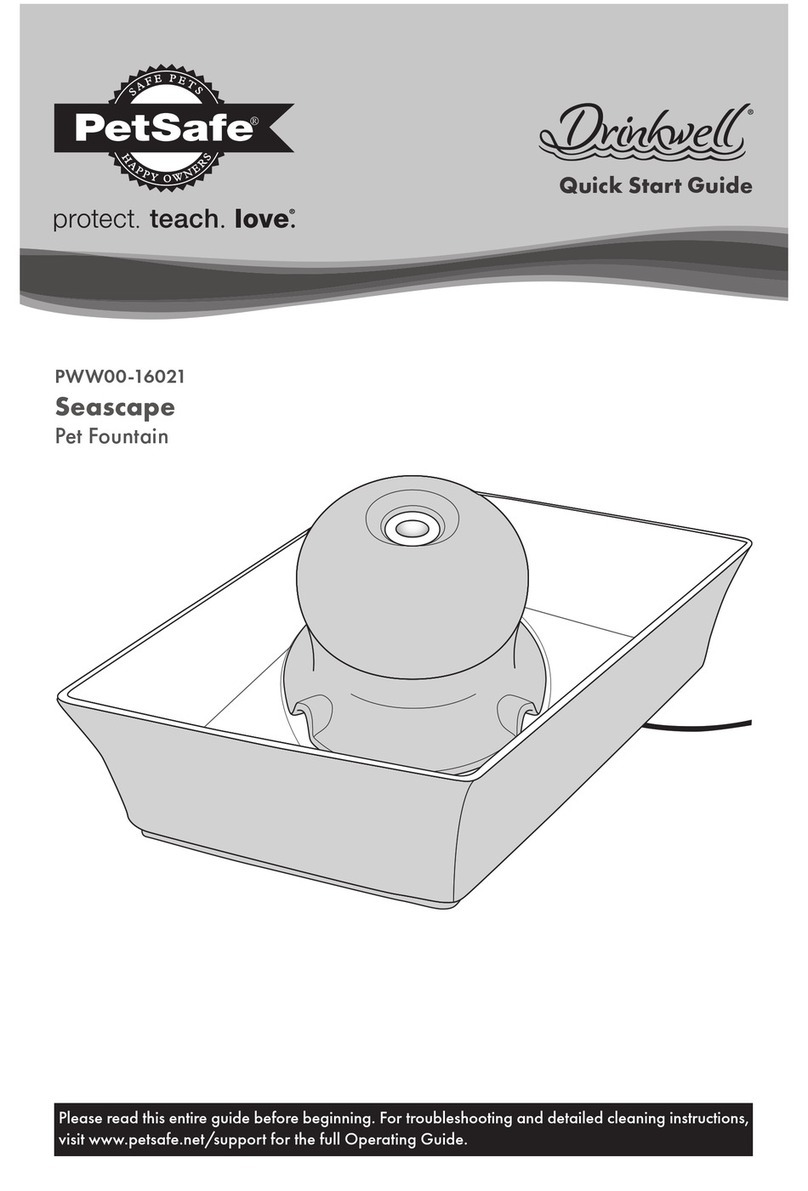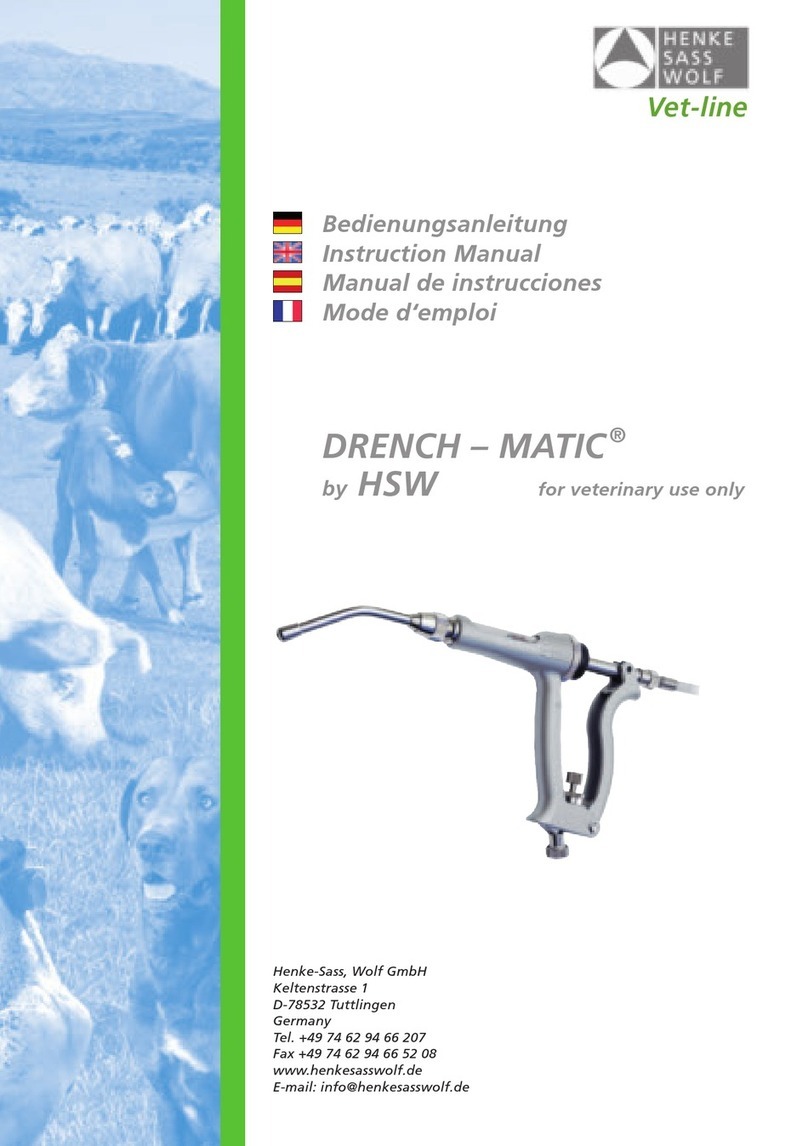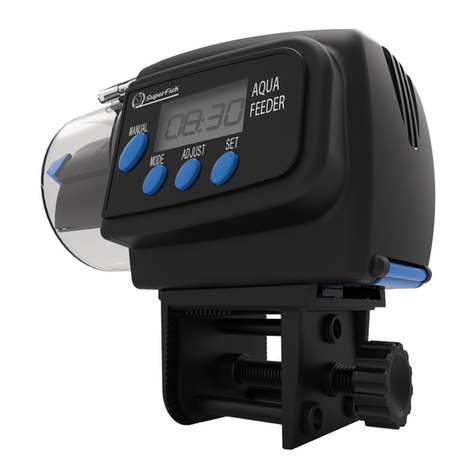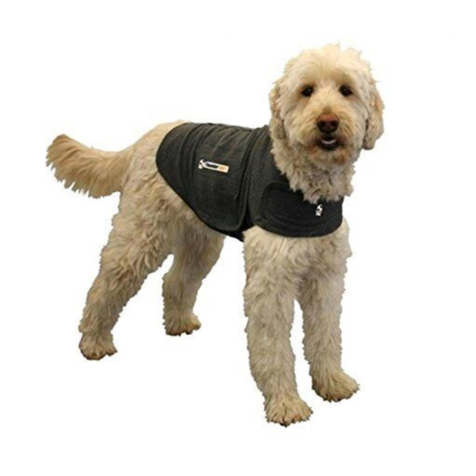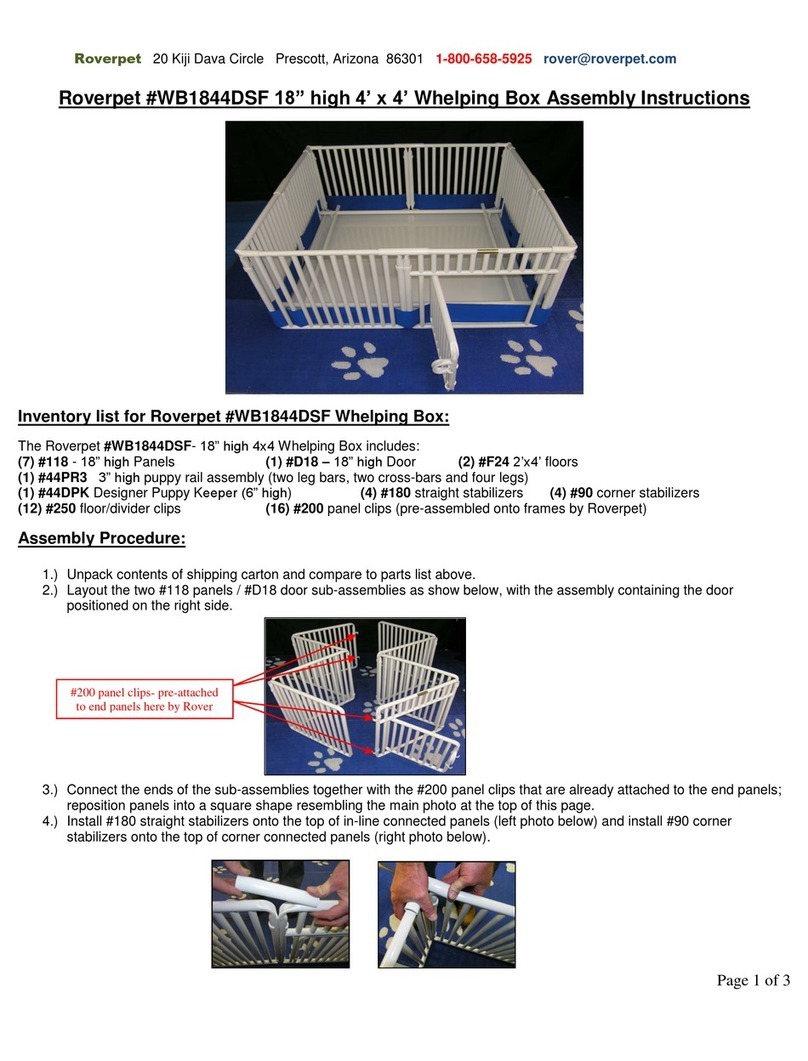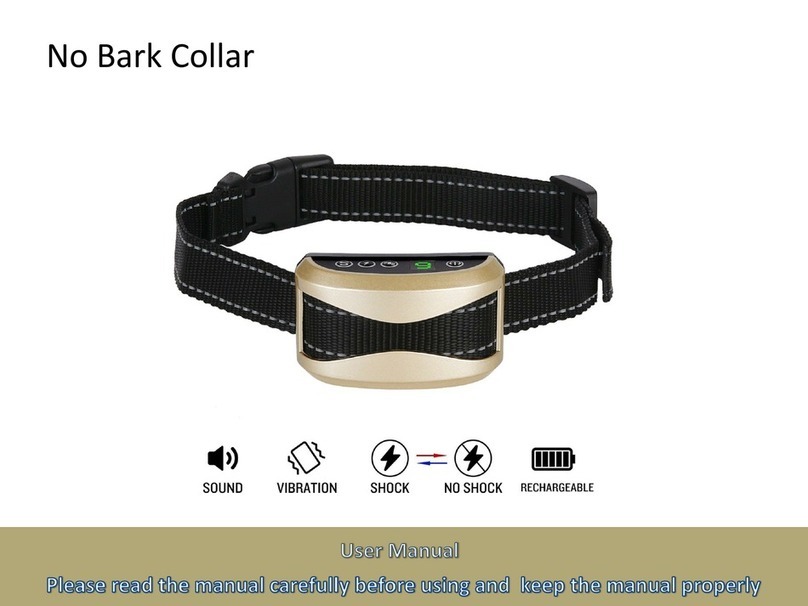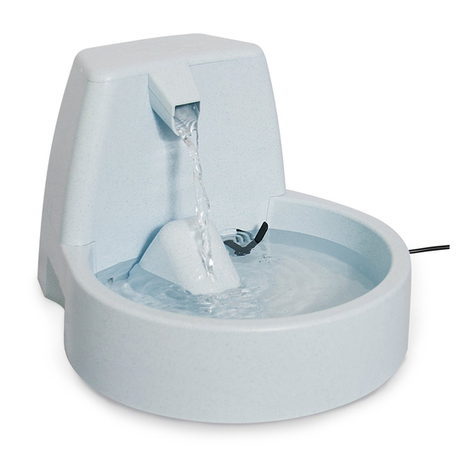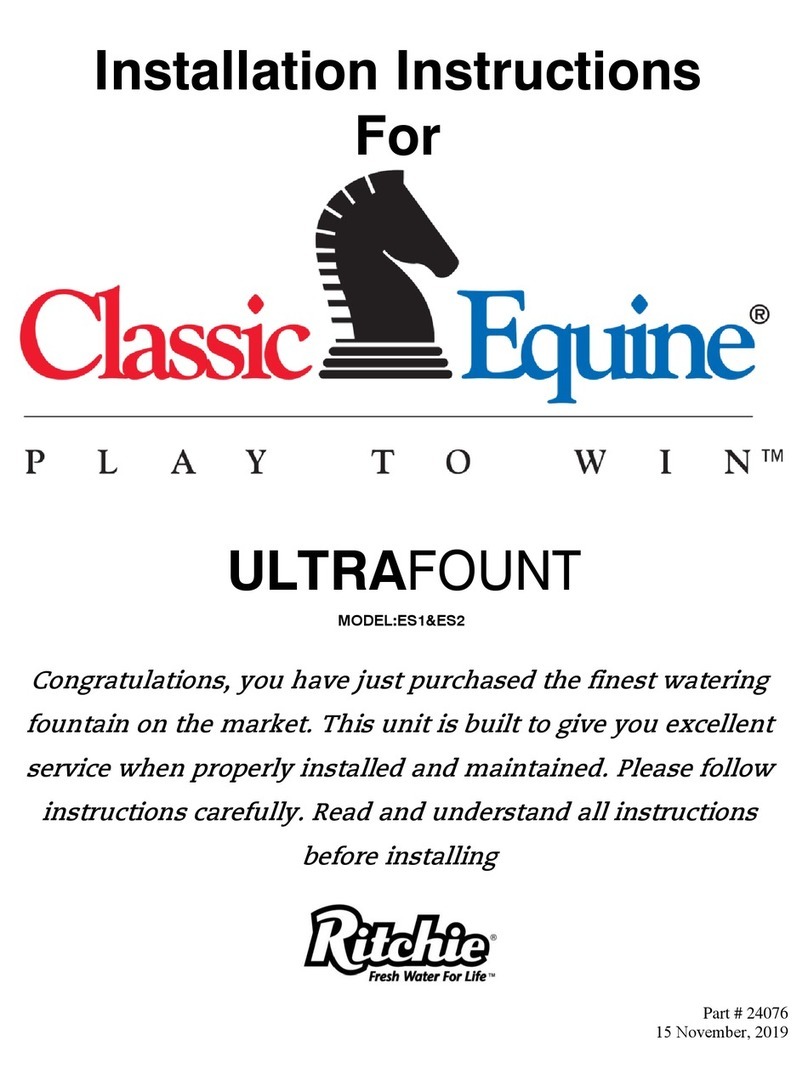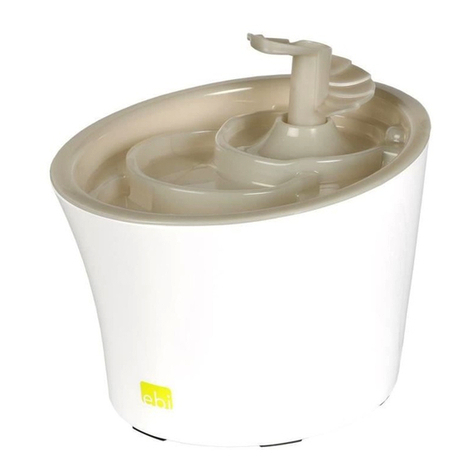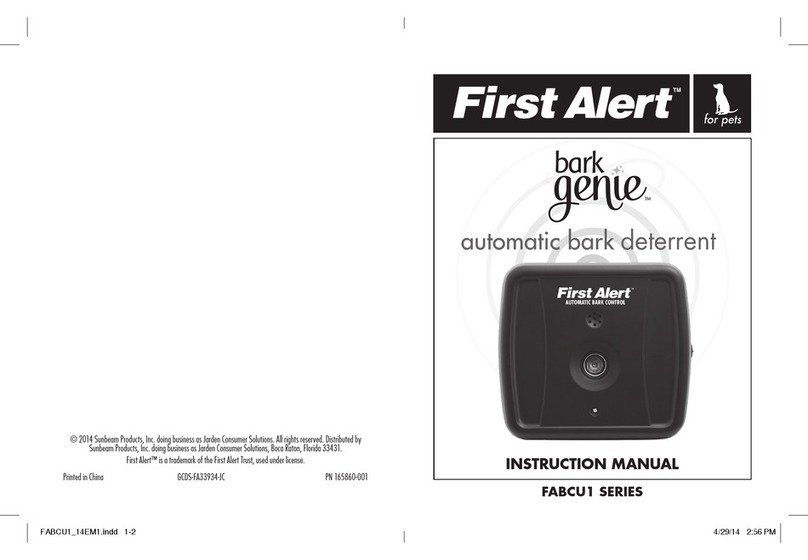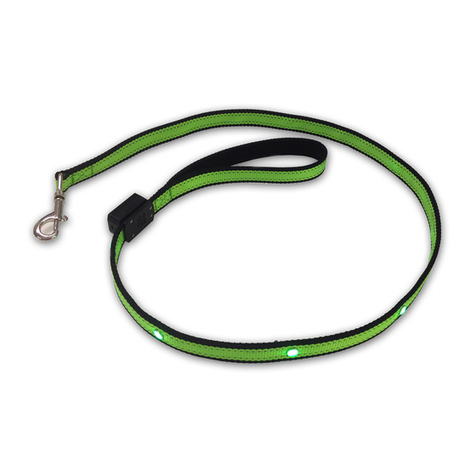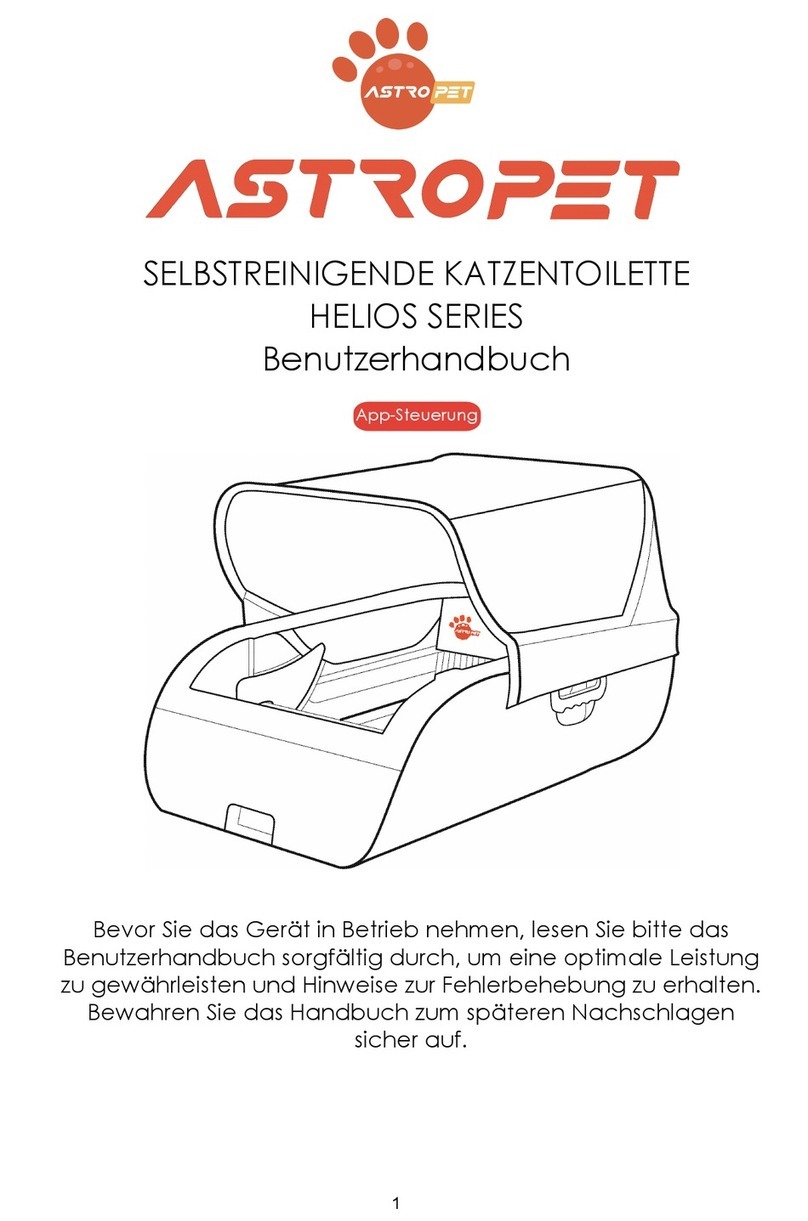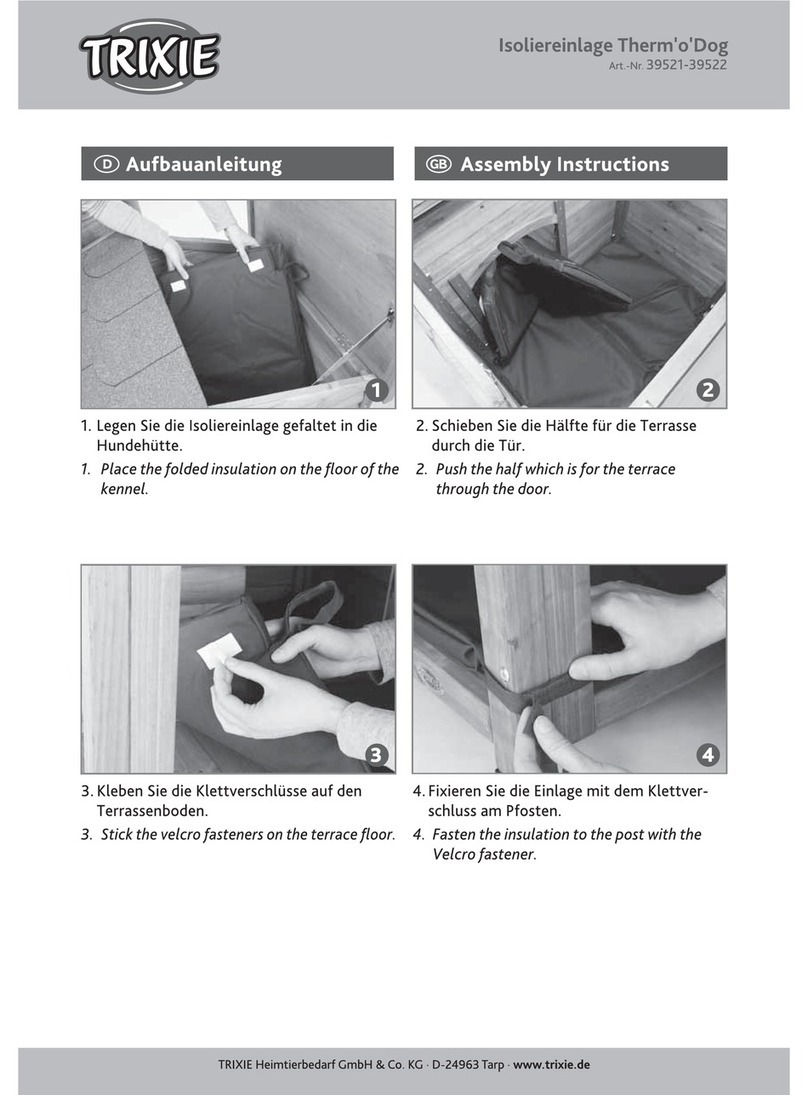Tetrafauna Aquatic Reptile Kit User manual

Aquatic Reptile Kit Setup
and Care Guide
Congratulations on the purchase of your new Aquatic
Reptile Kit! This guide will help you set up your new
habitat to keep your new pet happy and healthy. Please
read carefully prior to setting up your kit.
Choose Your Tetrafauna®Aquatic Reptile Kit
Location Carefully
Place your reptile kit in a location close to an electrical
outlet, to allow the use of lights and filters. The kit should
not be placed near heating or air conditioning ducts,
or in direct sunlight, as this can cause the temperature
inside the habitat to fluctuate, and direct sunlight can
cause algae growth. The kit should be placed on a flat,
water-resistant surface, designed to support its total
weight (filled with water and gravel, your kit could weigh
almost 200 pounds!). We recommend a commercially
manufactured aquarium stand for this purpose. Stands
13" wide or less should be anchored or tethered to a
wall to provide stability. Reptile habitats should not be
placed on top TV’s, or other electrical devices, or inside
entertainment centers.
Along one side of the aquarium, notches are located on
the inside corners of the top frame. These notches may
be broken away with pliers, to allow the use of electrical
cords. When locating your aquarium, these notches
should be positioned in the BACK of the aquarium.
Preparing Your Aquatic Reptile Kit and
Equipment
Before adding anything to your habitat, it is important
that you clean it thoroughly, using only plain tap water.
Do not use soap or chemicals on your aquarium or any
decororations that will go inside the reptile kit. Begin
by rinsing and wiping out the aquarium. Next, rinse the
Decorative ReptoFilter®unit, and place it in the rear corner
of the aquarium. Rinse gravel thoroughly until the water
runs clear. Add gravel to the reptile kit so that it covers the
bottom of the aquarium to approximately one inch deep.
Rinse the basking platform and any desired decorations
and plants, again using only plain tap water. Place the
basking platform and decorations into the reptile kit, and
arrange as desired.
Adding Water to Your Aquatic Reptile Kit
To fill your reptile kit, add household tap water so that the
water level falls between the “Minimum” and “Maximum”
fill lines marked on the back of the Decorative ReptoFilter®
unit. The water level should be below the top of the
basking platform. The height of the basking platform may
be changed by adjusting the amount of gravel under the
platform.
Turtles, adult frogs, newts and salamanders all require
a platform above the water line to properly digest their
food after eating, to use as a feeding location, or as a
place to rest and warm themselves. The basking platform
included in your kit will be perfect for your aquatic pets.
Before adding your new pets, be sure to add water
conditioner to the water in the reptile kit, to remove the
chorine found in most municipal water supplies. Chlorine
can be harmful to your pets. A water conditioner sample
is included in your kit for setup, and may be found in
your fish or reptile department of your local store. Water
conditioner should always be used when adding or
changing water in the reptile habitat.
To keep your pets comfortable, always allow water to
warm to room temperature before adding your pets to
their new home.
Filtration
To use your filter, simply follow the enclosed instructions
inside the Decorative ReptoFilter®package. For best
results, always ensure that the water level stays between
the “Minimum” and “Maximum” fill lines marked on the
back of the filter. Once the filter is running and the water
is clear and odorless, you may add your new pets.
Heat and Light
Aquatic reptiles are cold-blooded, so it is important to
keep the water a constant temperature, and to provide
a basking area where your reptile can warm itself. The
simplest way to keep your reptile warm, is to use the
heat lamp and bulb included in your kit. A 60-Watt
incandescent bulb is included, and the heat lamp may be
used with bulbs up to 75-watts. The incandescent bulb
should be installed in the shorter of the two dome lamps
included. Once the bulb is installed, place the lamp on top
of the screen on your kit, positioning it directly above the
basking platform, and allowing it to run for approximately
12 hours per day.
The UVB light spectrum is important for the health
of aquatic turtles. Your kit also includes a compact
fluorescent UVB bulb and a second, taller dome lamp.
This second dome lamp with UVB bulb should also be
positioned on the screen top above the basking area, and
run for 10-12 hours per day.
You may wish to purchase a timer to use with the lamps
while you are away or on vacation, to keep your reptiles
warm. If you are having trouble maintaining a constant
temperature, you may consider purchasing a submersible
aquarium heater to use in conjunction with your heat
lamp.

Cleaning and Maintenance
To keep your aquatic reptiles happy and healthy, it’s
important to change 20% of the water in the kit every
week with new conditioner-treated water. Skipping a water
change one week and following it the next week with 40%
water change is not recommended, because it forces your
pets to live in deteriorating water for additional period of
time, and then a sudden change in the water chemistry
caused by a large water change can be stressful. A 100%
water change should never be performed, as the drastic
change in water chemistry may cause stress, or even
death, to your pet.
Feeding
Aquatic Turtles
Most aquatic turtles are omnivorous, meaning they eat
both plants and animals in the wild. The best option
for feeding your turtle is a prepared aquatic turtle food
that usually comes in pellets or sticks, such as Tetra®
ReptoMin®Sticks. These foods contain animal and plant
material, vitamins, and minerals that are important to long-
term health.
Overfeeding leads to wasted and uneaten food, which
can quickly lower water quality. Prepared turtle food may
be fed once or twice a day, with no more being added
at a time than can be consumed in five minutes. To do
this, add a stick of food after each one that the turtle
eats, removing any that go uneaten. Feed that amount
as a general guideline each day. As a turtle grows, it will
require more food with each feeding, so you will need to
repeat the procedure above every two or three weeks to
determine the correct amount of food for your growing
turtle.
If you would like to feed your turtle live foods, such as
small fish, worms or insects, limit them to three feedings
each week, and remove any food that is uneaten so that
water quality is not affected by decaying food.
Frogs, Newts, and Salamanders
Unlike turtles, frogs, newts, and salamanders are strictly
carnivorous, meaning they eat only animal matter and no
plants. Small worms, wingless flies, crickets, and other
insects are the natural prey of these animals. Also, frozen
and prepared foods are available that may be used as a
portion of their diet.
Safety Tips
•Always grasp and carry an aquarium from underneath,
supporting the bottom at all times.
•Never try to move a full or partially full aquarium.
•Never lift your aquarium by grasping its upper frame.
•Never lift an aquarium with wet hands.
•Always remember to wash your hands before and after
handling your pets.
•Never place the dome lamps inside the reptile habitat,
or against the glass or plastic frame of the aquarium.
•Always position lamps on top of the metal screen.
Screen Top Instructions
The included screen top has been engineered for easy
access to your habitat.
To insert Screen Top:
1. Make sure the front handle and side latches are not
engaged. Rotate the main handle clockwise until it
stops. Rotate the two side latches so the triangles on
the knobs are pointing toward the middle of the
Screen Top.
2. Grasp the handle on top of the screen with one hand
and place the back onto the back edge of the habitat
frame.
3. Slide the screen back until the lip that runs along the
back edge catches on the back lip of the habitat frame,
using the guide tabs along the side of the screen to aid
in placement.
4. Tilt the screen down flat on the top of the habitat.
5. Gently rotate the front main handle counter-clockwise
until the padlock loop on the handle meets the padlock
loop on the screen. Your Screen Top is now secured to
your reptile enclosure.
6. For extra security, engage the two side latches by
turning in either direction until they stop.
To remove Screen Top:
1. If you have engaged the side latches, rotate both so
the triangular extensions on the knobs are pointing
toward the middle of the Screen Top.
2. Grasp the handle on top pf the screen with one hand
and gently rotate clockwise until the latch releases
from the frame.
3. Tilt the screen upward and pull gently toward the front
of the habitat to release.
4. Remove.
Register today for FREE TetraCare®
support! Let us help you with your
aquarium, so you can enjoy the fun.
• Totally free online and phone support.
• Free advice and tips to ensure
aquarium success.
• Helpful e-Minders for aquarium set-up
and maintenance.
• Money-saving offers and valuable
coupons.
United Pet Group, Inc. (UPG)
7794 Five Mile Rd. Suite 190
Cincinnati, OH 45230
1-800-322-1266 • www.tetrafauna.com
®Registered Trademark and ™Trademark of
United Pet Group, Inc. or one of its affilliates
©2014 UPG
P/N R06993 Rev. A
